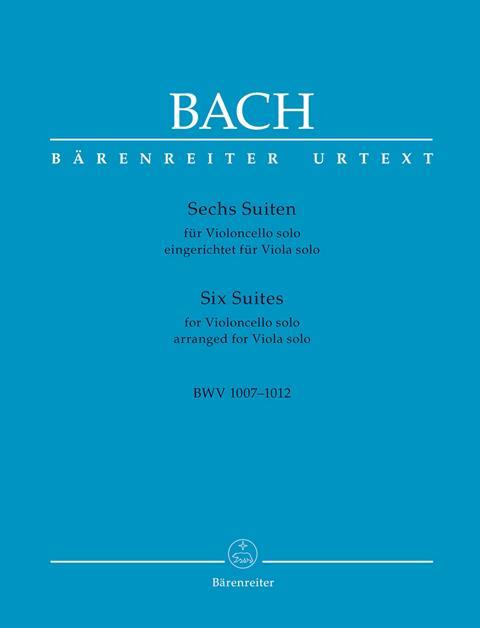Misha Galaganov reviews Bärenreiter’s new edition of the Bach Suites edited for performance by violists

Bach Six Suites for Violoncello solo (BWV1007–12)
Arranged for Viola solo
Ed. Chung Park
74PP ISBN 9790006568895
BÄRENREITER URTEXT £18
While the majority of modern editions of Bach’s Cello Suites are based on the manuscript by Anna Magdalena Bach, this new innovative edition for viola is based on manuscript C (c.1760s) by Johann Nikolaus Schober, and an anonymous copyist, and manuscript D (1795?) prepared by another anonymous hand.
Playing from the Bärenreiter edition is a pleasure. The music opens easily and stays flat, the layout is thoughtful and clear, and page turns are carefully thought out. It is even possible to perform the long Prelude from Suite no.5 while reading from the music, because open strings in the entire last bar on page 35 (and 43) make it possible to play and turn at the same time.
This edition provides two versions of Suite no.5: the original scordatura version and a pitch notation version. One should not be afraid to tune the A string down to G and learn the suite in its original version. For Suite no.6, the edition includes the original in D major – which it is best to play on a five-string instrument with an E string – and a transposed version in G major. The G major version sounds better on a viola with four strings.
It is very refreshing to explore new appoggiaturas and different notes provided in sources C and D. In this aspect, the new viola version is very important and inspiring, and it might become an indispensable edition for violists.
Unfortunately there are a few missed opportunities. Although both the C and D manuscripts have been used, when there are discrepancies between the two, source D is used in the vast majority of cases throughout the book. For example, in the Sarabande of Suite no.1, source C has a trill on the second beat of bar 4 and a nice appoggiatura note before the second beat of bar 8. Both of these are omitted in the viola part, because they are not in source D. This is surprising, because Johann Nikolaus Schober, the copyist for half of source C, had an excellent reputation and proved to be very reliable and accurate in copying Bach’s Sonatas and Partitas. It is disappointing that in a scholarly edition such as this one, there are no footnotes or endnotes indicating options not included by the editor.
The most frustrating feature of the new edition is bowings. It is much easier to play all bowings directly from a facsimile of either source than to follow the editor’s reading of them in the Bärenreiter viola edition. This could be a major barrier for an inexperienced student learning a suite for the first time. This reviewer recommends letting one’s musicality and experience guide bowing decisions.
Review: Misha Galaganov: Charm, Passion and Acrobatics
Read: Telemann’s Viol Fantaisies on the viola
Read: A 30-minute daily practice routine for violinists and violists
Overall, the Bärenreiter edition of the Bach Suites in viola version is an important resource and I am excited to own it. However, one is advised to consult facsimiles of the sources to take full advantage of what this edition has to offer.
MISHA GALAGANOV



































No comments yet